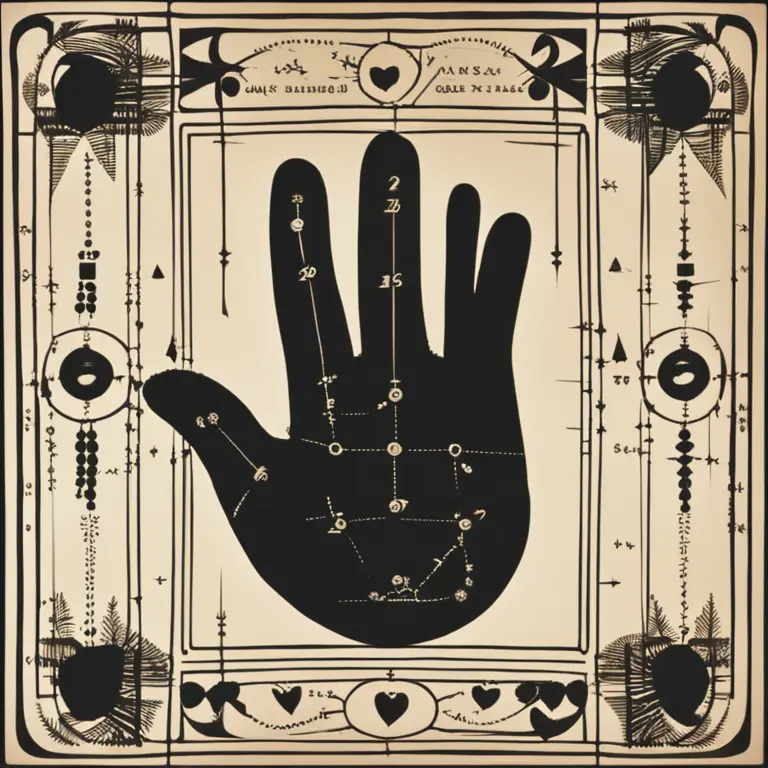
Which Hand to Read in Palmistry: A Short Guide
Discover which hand is the focus for a palm reading session in this insightful guide to palmistry practices.
article by Nora Pennington
The Basics of Palm Reading
In the fascinating world of palmistry, a common question emerges: "Which hand should be read?" The answer is not as straightforward as one might think, as palm reading traditions vary across cultures and schools of thought. In essence, the practice involves examining the lines, shapes, and patterns on the palms to glean insights into a person's character and future. Dating back thousands of years, palmistry has evolved, with different practitioners advocating for distinct approaches when it comes to the question of which hand to read.

Right Hand vs. Left Hand
The general consensus among contemporary palmists leans towards a dichotomy between the hands. The left hand, often associated with the 'private self', is believed to be connected to an individual's potential and personal challenges. It is sometimes referred to as the hand we are born with, carrying innate traits and latent possibilities. Conversely, the right hand, known as the 'public self', is said to reflect the outcomes of our choices, life events, and the influence of the surrounding environment. It is looked upon as the hand we have crafted over time through our experiences.

Dominant Hand Consideration
Many palm readers also take into account an individual's dominant hand—the one they use to write or perform most tasks—as this is seen as the active hand, symbolizing the conscious mind. It is believed to represent how we shape our destiny and interact with the outside world. The non-dominant hand, on the other hand, reveals the subconscious, including traits and undercurrents within our personality that might not be as visible on the surface. Therefore, some practitioners suggest reading both hands for a more holistic understanding of a person's life path.

Nuances of Interpretation
There is another layer of interpretation within the context of timing. For instance, some schools of thought highlight that the left hand shows potential up to a certain age, and the right hand illustrates the course of action taken after reaching that age. This age can differ according to the tradition one follows, but it often correlates with significant life stages such as puberty, adulthood, or middle age. As the individual progresses through life, the right hand gains more prominence in the reading, revealing the actualization of one's potential and the lived experiences.

Modern Approaches in Palmistry
In the digital age, palmistry has not been left behind, incorporating technological advancements and new streams of thought. Some modern practitioners employ computer software to analyze handprints and the changes your hands undergo over time. These tools can supplement the reading of both the hands, providing a more detailed and dynamic perspective. The preference for which hand to read also varies with the integration of psychological aspects into the craft, where the approach might change based on the subject's mental and emotional state.
Personalized Palm Readings
Ultimately, the most reputable palm readers often suggest that a palm reading should not be rigid but rather tailored to the individual. Some may choose to focus on the dominant hand for a session centered on current life challenges and decisions, while a reading that aims to explore an individual's capacity or untapped potential may incorporate a greater emphasis on the non-dominant hand. Given this fluidity, it's common for palm readers to ask clients about their specific goals for a session to best determine the approach.
Published: 1/11/2024
Modified: 1/12/2024
More predictions
Come back here soon to learn more about yourself and your future


Can Palmistry Predict Your Path Incorrectly?
Delving into the accuracy of palm readings, this article examines whether palmistry can lead to incorrect predictions about one's life and destiny.


The Possibility of Palmistry in Cancer Detection
Examining the claims that palmistry holds any potential in identifying the risk of cancer: a deep dive into the world of mysticism and medicine.


The Essence of Palmistry: Interpreting Lines and Shapes
Delve into the world of palmistry to discover the meanings behind the lines and shapes etched into the palms of your hands.